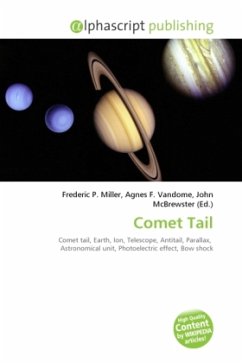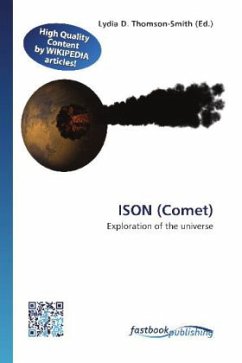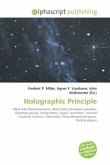A Comet tail and coma are illuminated by the Sun and may become visible from Earth when a comet passes through the inner solar system, the dust reflecting sunlight directly and the gases glowing from ionisation. Most comets are too faint to be visible without the aid of a telescope, but a few each decade become bright enough to be visible to the naked eye.The streams of dust and gas each form their own distinct tail, pointing in slightly different directions. The tail of dust is left behind in the comet's orbit in such a manner that it often forms a curved tail called the antitail. At the same time, the ion tail, made of gases, always points directly away from the Sun, as this gas is more strongly affected by the solar wind than is dust, following magnetic field lines rather than an orbital trajectory. Parallax viewing from the Earth may sometimes mean the tails appear to point in opposite directions.
Bitte wählen Sie Ihr Anliegen aus.
Rechnungen
Retourenschein anfordern
Bestellstatus
Storno








